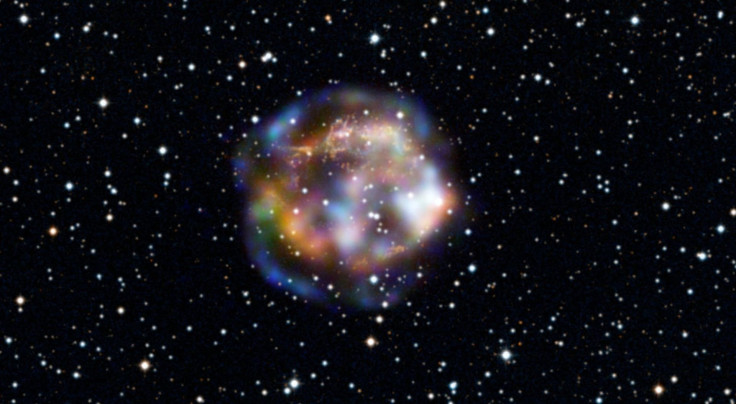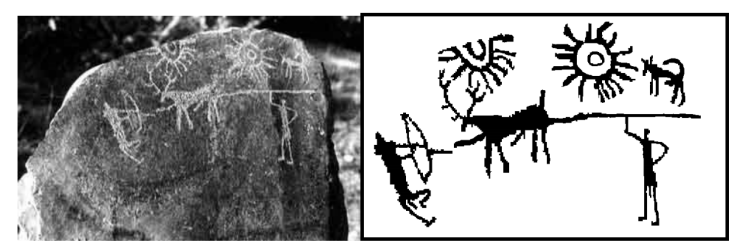5,000 Year Old Indian Rock Painting May Be Oldest Star Chart, Supernova Depiction

Rock art, dating back 5,000 years, was discovered in India and may be the oldest star chart ever, as well as the very first depiction of a supernova, according to Quartz India Sunday.
The art was discovered in the Kashmir region of Asia in Northern India. The rock art depicts a sky with two bright objects in it and figures of animals and humans below. The art reportedly dates back to between 2100 and 4100 BC. Initially, the animals and humans appear to be part of a hunting scene, but research by several scientists theorizes that the figures represent star patterns and that the two bright object are a sun or moon and a supernova.
The theory was published in the December issue of the Indian Journal of History of Science.
Astrophysicist Mayank Vahia and his colleagues at the Tata Institute of Fundamental Research worked backward to see if there were any supernovas bright enough to be seen on the Earth in that time frame. A supernova is a giant stellar explosion when certain stars die. Supernovas emit X-Rays into the universe that allow researchers to date supernovas going back thousands of years.

Vahia discovered a supernova, HB9, that exploded around 3600 BC, placing it around the time the drawing was made. Vahia also theorizes that the drawings of human and animals are actually representations of constellations. A man with a bow, he surmises, represents Orion, a man holding a spear is part of Pisces, the deer they are attacking is Taurus and a dog is the Andromeda galaxy. The figures placement in the scene closely matches where these constellations are on a sky chart — making the drawing possibly the earliest example of a sky chart and first depiction of a supernova.
Vahia working with the Indira Gandhi National Centre for the Arts is trying to find a second example of a sky chart from the region to corroborate his theory. While the elements of sky chart fit into the drawing, the lack of other sky charts from the period could mean that the researcher’s theory is just a coincidence. If ancient people drew one sky chart, it's likely they drew another.
Vahia is confident that more artwork to emerge from the region will corroborate his discovery.
© Copyright IBTimes 2024. All rights reserved.





















